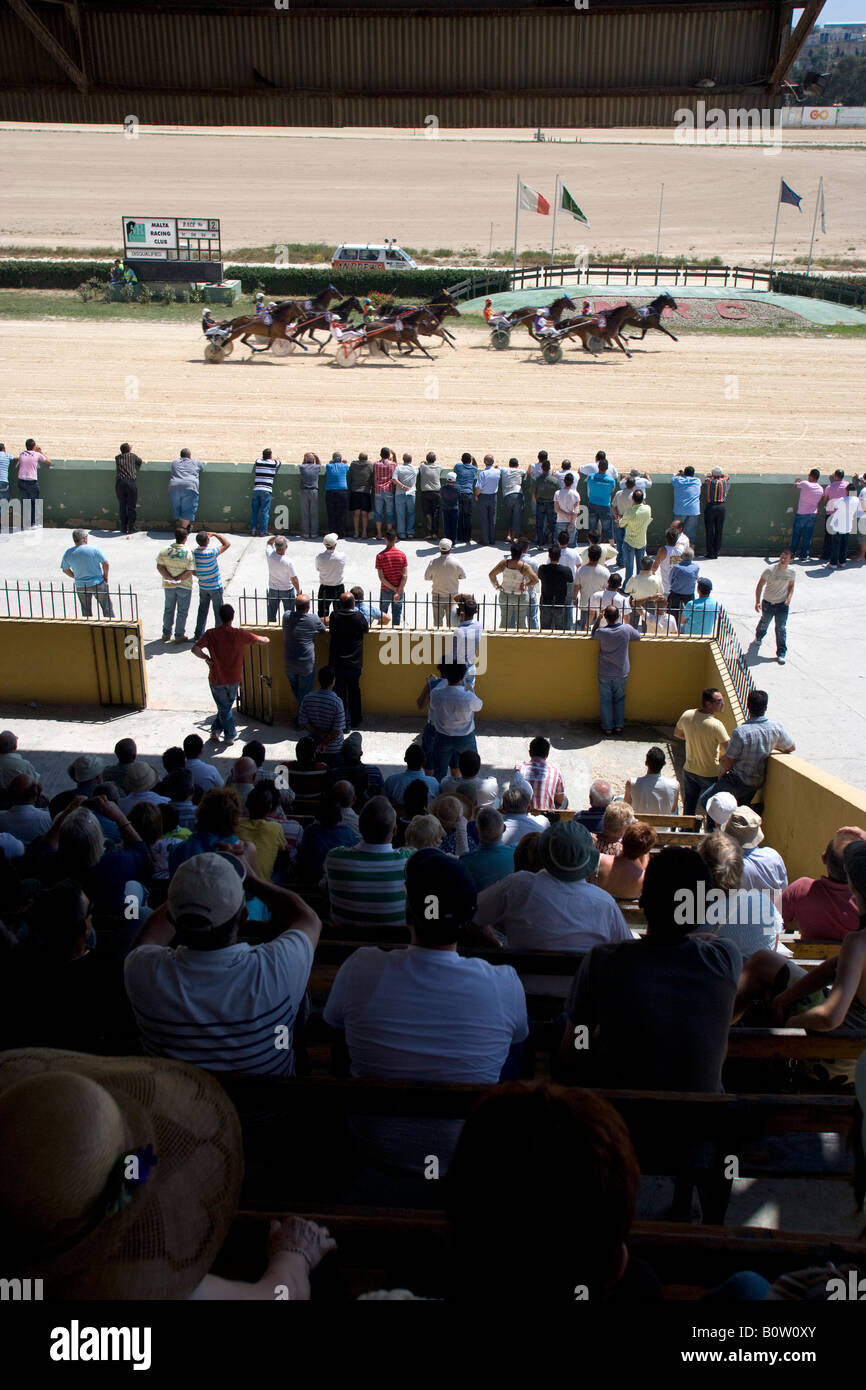Horse Racing Track Marsa Valletta Malta

Image details
Contributor:
setchfield / Alamy Stock PhotoImage ID:
B0W0XYFile size:
57.5 MB (2.2 MB Compressed download)Releases:
Model - no | Property - noDo I need a release?Dimensions:
3661 x 5491 px | 31 x 46.5 cm | 12.2 x 18.3 inches | 300dpiDate taken:
2008More information:
Horse riding and driving had always been a popular sport in Malta in spite of the lack of facilities, but it was not until 1868 that a small number of keen enthusiasts, made up mostly of Military and Naval officers and local gentry, decide to found a racecourse. The first Malta Race Committee was set up by these pioneers, and the Marsa area was selected as the official site for the construction of the racetrack, the longest one in Europe at one and three quarters’ miles long. Funds were limited, and the initial costs were quite exorbitant. The first financial prospectus circulated by the Committee met with failure. However, the gentlemen concerned refused to be deterred. They unanimously resolved to undertake the project on their own responsibility. Somehow their dream was realized, and the first race meeting was held on the 12th and 13th April 1869. The card consisted of seven events, including “The Malta Grand National Steeplechase”, a two-mile race open to English Horses, Arabs, Barbs and Spanish. Meagre records of these early years make it difficult to follow the initial progress. Most documentation had unfortunately been destroyed by enemy action during the last war. It seems, however that between 1872 and 1914, all the jockeys were amateurs and meeting took place on a “gratis et amoris” basis. Prospects began to look brighter in 1929, following a period of post war recuperation, mainly due to the large influx of British servicemen and a build-up of strings of expertly trained racehorses imported from North Africa. Trotting Horses were first introduced in 1934. However, the outbreak of the Second World War brought a mass slaughter of most of the racehorses, and curtailed any further headway yet again. The ensuing revival was long and arduous, but on the 29th December 1945, small race meetings recommenced. Later on, the availability of Trotting Horses and the steady inflow of European thoroughbreds for Flat Races enabled the officials to provide mor